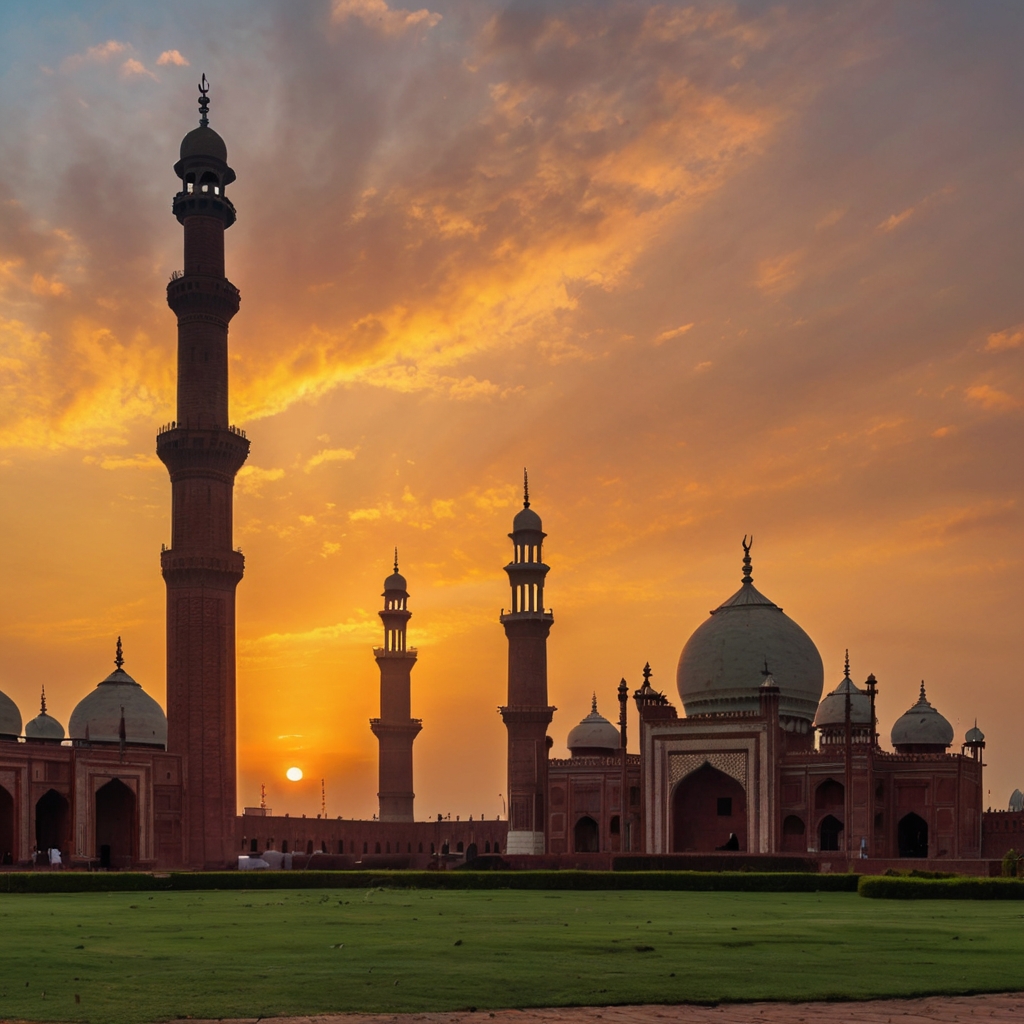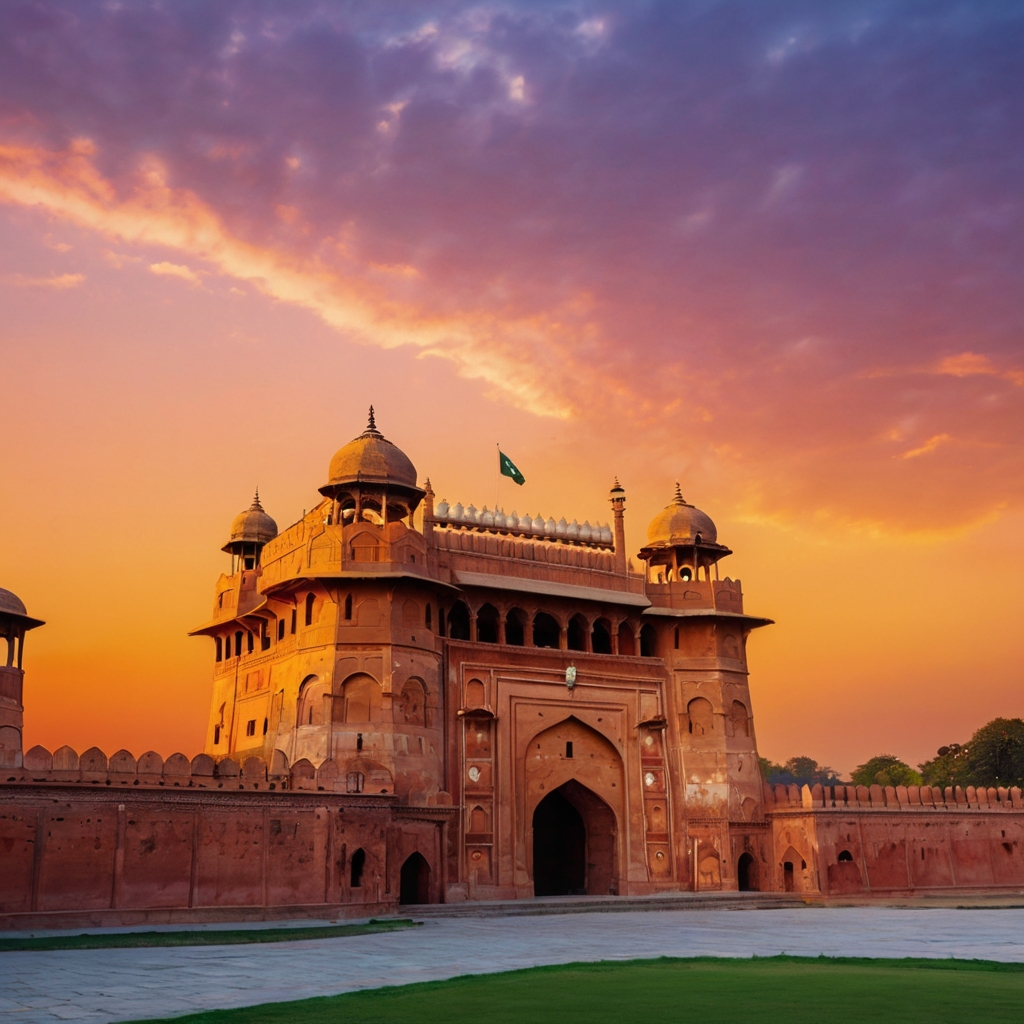Badshahi Mosque A Jewel of Mughal Architecture in Lahore
Discover the Grandeur of Badshahi Mosque: Lahore's Iconic Architectural Marvel Badshahi Mosque, situated in the heart of Lahore, Pakistan, stands as a testament to the grandeur and architectural brilliance of the Mughal era. This magnificent structure is not only one of the largest mosques in the world but also a symbol of cultural and historical significance. Its intricate design, majestic domes, and imposing minarets make it a masterpiece of Islamic architecture, attracting visitors from across the globe. Historical Background: Commissioned by the Mughal Emperor Aurangzeb in 1671, Badshahi Mosque was constructed to commemorate his military victories over the Maratha Empire. It was completed in just two years, from 1671 to 1673, under the supervision of Aurangzeb's foster brother and governor of Lahore, Fidai Khan Koka. The mosque was designed by the renowned architect Nawab Zain Yar Jang Bahadur, who drew inspiration from Mughal, Persian, and Central Asian architectural styles. Architectural Features: Badshahi Mosque is characterized by its imposing red sandstone structure, with white marble inlay work adding to its beauty. The mosque's main prayer hall is vast, capable of accommodating over 55,000 worshippers at a time. The hall is divided into seven bays by massive arches, supported by elegant pillars adorned with intricate floral motifs and Quranic inscriptions. The mosque's central dome is one of its most striking features, rising to a height of 177 feet (54 meters) and flanked by four towering minarets, each standing at 176 feet (53.75 meters) tall. The domes and minarets are embellished with intricate marble and sandstone carvings, including geometric patterns, calligraphy, and floral designs, showcasing the mastery of Mughal craftsmen. The façade of Badshahi Mosque is adorned with intricate frescoes and tile work, depicting floral motifs, Quranic verses, and Islamic calligraphy. The marble prayer chamber is lavishly decorated with inlaid marble, while the exterior features intricate jali screens that allow sunlight to filter into the mosque, creating a mesmerizing play of light and shadow. Significance and Cultural Impact: Badshahi Mosque holds immense cultural and historical significance for the people of Pakistan and the wider Muslim world. It has served as a place of worship and community gathering for over three centuries, witnessing countless prayers, religious ceremonies, and historic events. The mosque's significance extends beyond its religious function; it is also a symbol of national pride and identity. Its majestic silhouette dominates the skyline of Lahore, serving as a reminder of the city's rich Mughal heritage and architectural legacy. Badshahi Mosque has also become a popular tourist destination, attracting visitors from around the world who come to marvel at its beauty and learn about its history. Badshahi Mosque stands as a timeless monument to the glory of the Mughal Empire and the enduring spirit of Islamic architecture. Its grandeur, beauty, and historical significance continue to captivate visitors, making it a must-visit destination for anyone interested in the rich cultural heritage of Pakistan. As one of the largest mosques in the world and a masterpiece of Mughal architecture, Badshahi Mosque remains a source of inspiration and reverence for generations to come.




